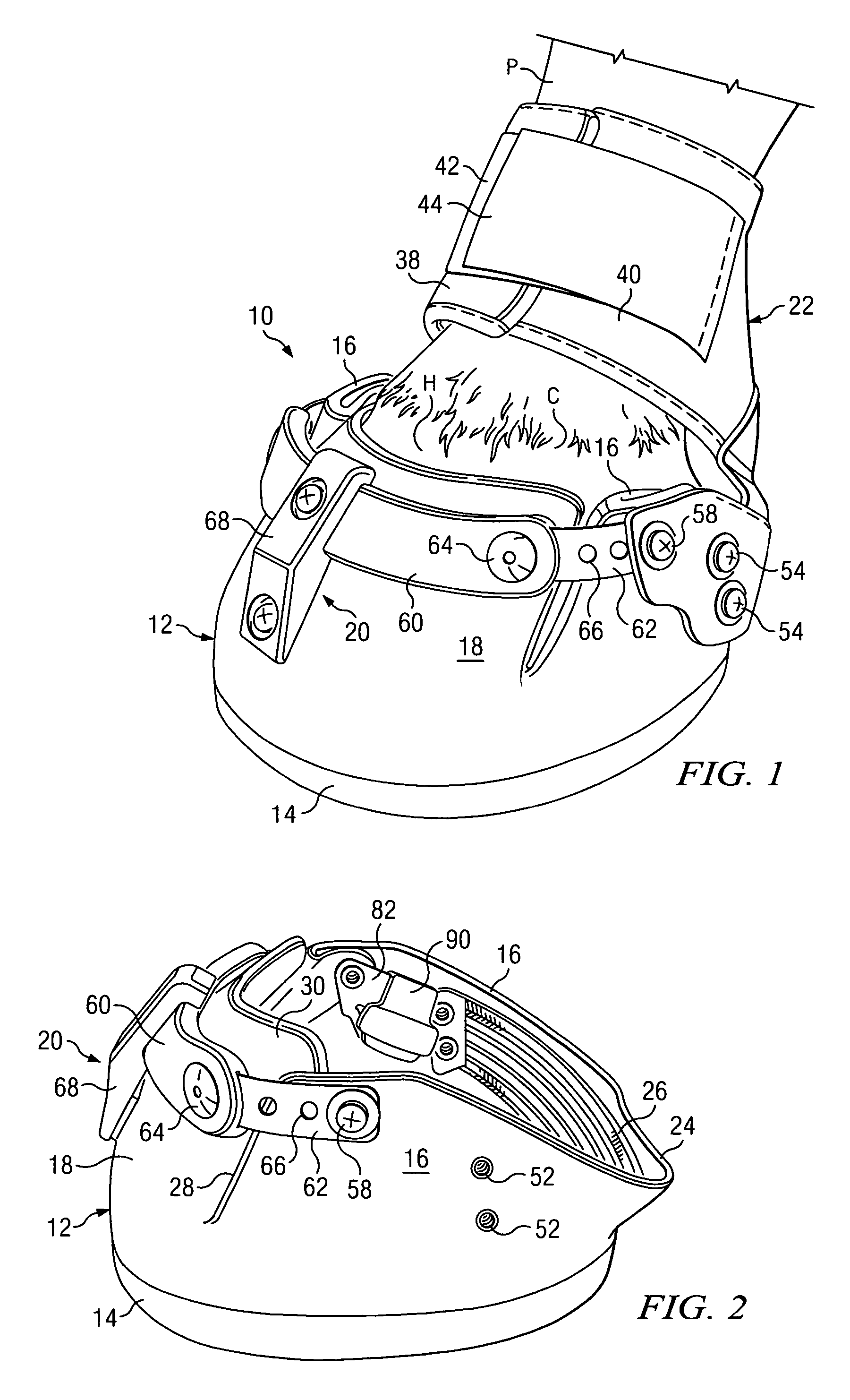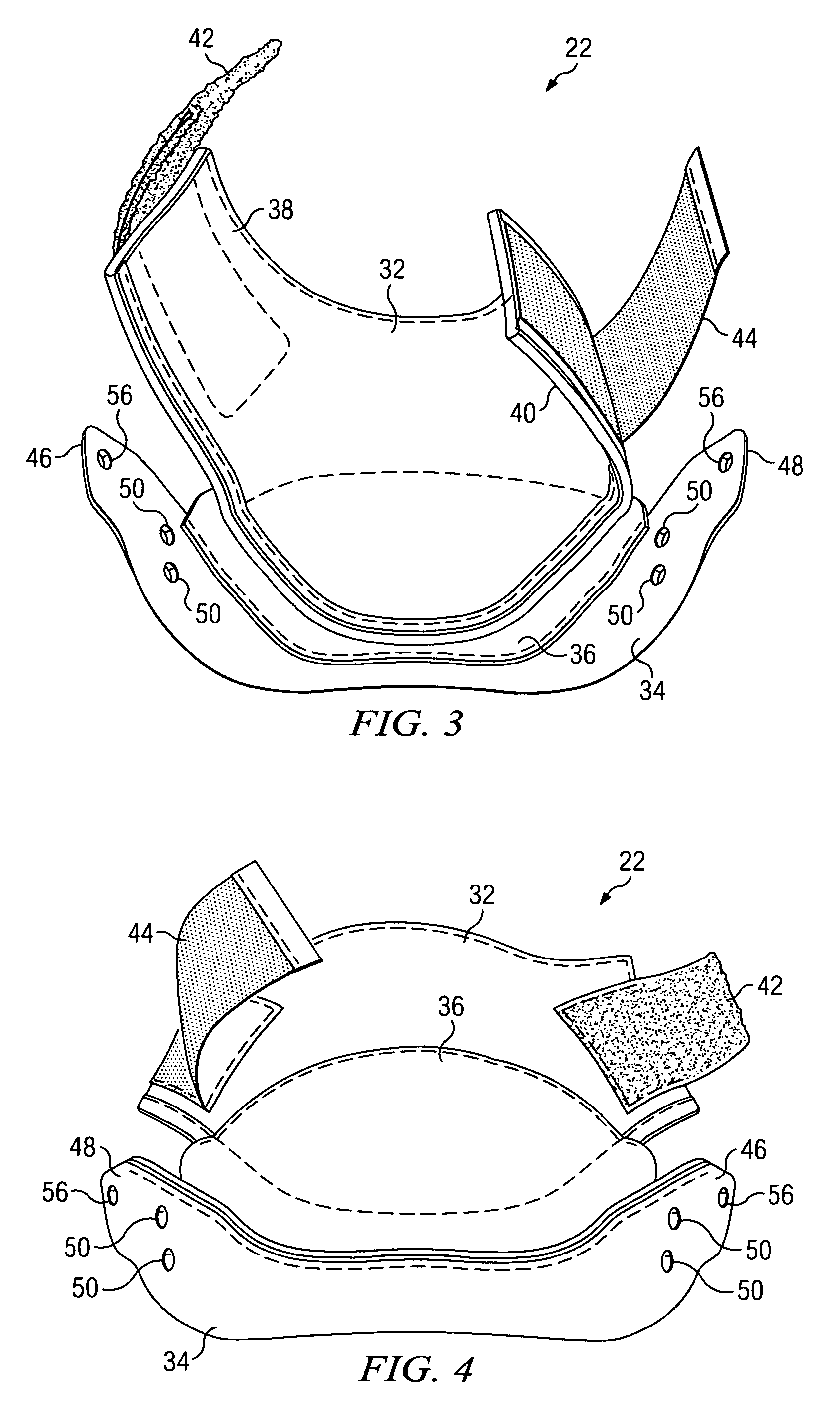Slip-on horse boot with replaceable pastern gaiter
a technology of pastern gaiter and slip-on boots, which is applied in the field of boots for horses, can solve the problems of irritation or even injury to horses, loose boots are also more likely to come off, and all prior-art boots have been deficient in at least some of these objectives, so as to improve the retention of boots and neutralize the grip
- Summary
- Abstract
- Description
- Claims
- Application Information
AI Technical Summary
Benefits of technology
Problems solved by technology
Method used
Image
Examples
Embodiment Construction
[0029]The advance in the art provided by this invention lies in the performance improvements achieved by using a replaceable gaiter that provides an anchoring function to the back of the boot and an elastic strap that tightens the upper around the front of the hoof in a firm but giving manner. In combination, these novel features make it possible to install the boot with ease, provide a comfortable wear free of debris, prevent accidental loss of the boot, allow the natural circulatory action associated with pressing on and releasing the hoof, and protect the pastern and hairline from irritation and chafing. If the buckle mechanism is used to secure the front of the boot to the hoof, all these advantages are still present except for the enhancement to the physiological blood-circulation function of the hoof.
[0030]As used herein, the term “elastic” means capable of stretching when subjected to a tensile force and of contracting to the original condition when such force is released. In...
PUM
 Login to View More
Login to View More Abstract
Description
Claims
Application Information
 Login to View More
Login to View More - R&D
- Intellectual Property
- Life Sciences
- Materials
- Tech Scout
- Unparalleled Data Quality
- Higher Quality Content
- 60% Fewer Hallucinations
Browse by: Latest US Patents, China's latest patents, Technical Efficacy Thesaurus, Application Domain, Technology Topic, Popular Technical Reports.
© 2025 PatSnap. All rights reserved.Legal|Privacy policy|Modern Slavery Act Transparency Statement|Sitemap|About US| Contact US: help@patsnap.com



